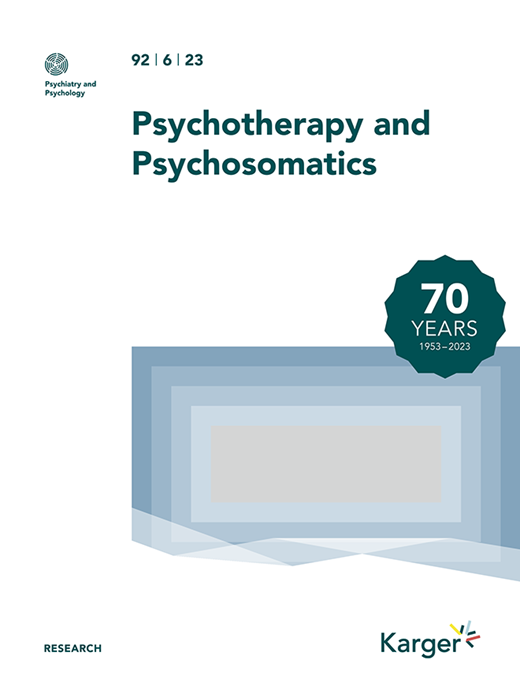Interoceptive Neural Circuits Mediating the Progression from Somatic Diseases to Comorbid Depression.
IF 17.4
1区 医学
Q1 PSYCHIATRY
引用次数: 0
Abstract
INTRODUCTION Somatic diseases comorbid with depression exacerbate the health burden. The interoceptive neural circuit (INC) might mediate brain-body connections. We aimed to assess the causal relationship between somatic diseases, the INC, and depression. METHODS We conducted Mendelian randomization (MR) analysis to determine the following: 1) the causal effect of four categories of systemic somatic diseases (ulcerative colitis, essential hypertension, chronic pain, and type 2 diabetes) on the INC's morphology; 2) the causal effect of INC morphology on depression; and 3) the INC's mediating role between somatic diseases and depression. A replication analysis confirmed the results above in other GWAS datasets. An extended analysis further validated the predictive role of the INC for depression in another systemic disease (asthma). RESULTS We found all four systemic somatic diseases resulted in morphological changes in the INC, with shared reduced left ventral diencephalon (L-VDC). The morphological alterations of the INC increased depression risk, with the bilateral ventral thalamus most impacted. The L-VDC volume mediated the relationship between somatic diseases and depression, a finding validated across different datasets. The mediating role of the L-VDC in the relationship between somatic diseases and depression remains present in asthma. CONCLUSION The INC, particularly the L-VDC, plays a crucial role in the pathogenesis of depression and the intersection of somatic diseases. The INC mediates the progression from somatic diseases to comorbid depression, suggesting that interventions targeting the INC may prevent and alleviate the burden of comorbid somatic diseases and depression.感受间神经回路介导躯体疾病向共病性抑郁的进展。
躯体疾病与抑郁症合并症加重了健康负担。感觉间神经回路(INC)可能介导脑-体连接。我们的目的是评估躯体疾病、INC和抑郁之间的因果关系。方法采用孟德尔随机化(MR)分析确定:1)四类系统性躯体疾病(溃疡性结肠炎、原发性高血压、慢性疼痛和2型糖尿病)对INC形态学的因果关系;2) INC形态与抑郁的因果关系;3) INC在躯体疾病与抑郁之间的中介作用。复制分析在其他GWAS数据集中证实了上述结果。一项扩展分析进一步证实了INC对另一种全身性疾病(哮喘)中抑郁症的预测作用。结果四种全身性躯体疾病均导致INC的形态学改变,并伴有左腹间脑(L-VDC)的共同减少。INC的形态学改变增加了抑郁的风险,其中双侧丘脑腹侧受到的影响最大。L-VDC体积介导了躯体疾病和抑郁之间的关系,这一发现在不同的数据集中得到了验证。L-VDC在躯体疾病和抑郁之间的中介作用在哮喘中仍然存在。结论INC,尤其是L-VDC在抑郁症发病和躯体疾病交叉中起着重要作用。INC介导从躯体疾病到共病抑郁的进展,提示针对INC的干预可能预防和减轻共病躯体疾病和抑郁的负担。
本文章由计算机程序翻译,如有差异,请以英文原文为准。
求助全文
约1分钟内获得全文
求助全文
来源期刊

Psychotherapy and Psychosomatics
医学-精神病学
CiteScore
29.40
自引率
6.10%
发文量
46
期刊介绍:
Psychotherapy and Psychosomatics is a reputable journal that has been published since 1953. Over the years, it has gained recognition for its independence, originality, and methodological rigor. The journal has been at the forefront of research in psychosomatic medicine, psychotherapy research, and psychopharmacology, and has contributed to the development of new lines of research in these areas. It is now ranked among the world's most cited journals in the field.
As the official journal of the International College of Psychosomatic Medicine and the World Federation for Psychotherapy, Psychotherapy and Psychosomatics serves as a platform for discussing current and controversial issues and showcasing innovations in assessment and treatment. It offers a unique forum for cutting-edge thinking at the intersection of medical and behavioral sciences, catering to both practicing clinicians and researchers.
The journal is indexed in various databases and platforms such as PubMed, MEDLINE, Web of Science, Science Citation Index, Social Sciences Citation Index, Science Citation Index Expanded, BIOSIS Previews, Google Scholar, Academic Search, and Health Research Premium Collection, among others.
 求助内容:
求助内容: 应助结果提醒方式:
应助结果提醒方式:


